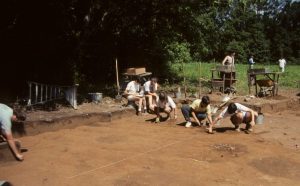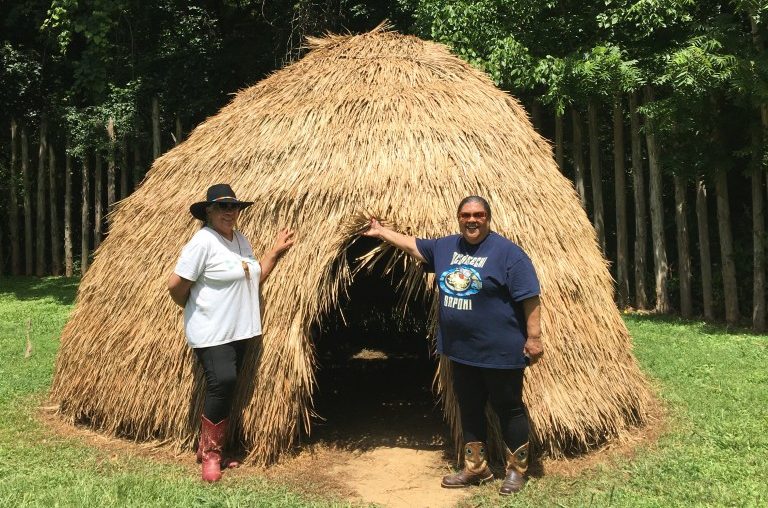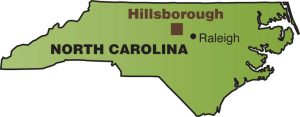The Hillsborough Archaeological District is located in the Piedmont region of North Carolina, and consists of at least four Native American sites. While artifacts have been found on the property that date back 12,000 years, the most intensive occupations span the time period from A.D. 1000 until the early 1700s, offering an opportunity to understand cultural change in Native communities in the region from just before to after European arrival in North America. The property is situated at a large bend in the Eno River, and is the location where a historic trading path crossed the river near Hillsborough.
The defined sites on the property are known as Hogue, Wall, Jenrette, and Fredricks. They have been excavated intermittently from the 1930s to the 2010s, with much of the work being undertaken by archaeologists and students from the University of North Carolina (UNC) at Chapel Hill. Archaeologist and Professor Emeritus R. P. Stephen Davis Jr. has directed many of the excavations and brought the sites to the Conservancy’s attention. This research has documented the shift from hunter-gatherer cultures to more permanent settlement, as evidenced by thousands of features and artifacts including post holes outlining house sites, pits, and middens.

University of North Carolina at Chapel Hill students excavated the Jenrette site in 1995.
Photo credit: Steve Davis / University of North Carolina Libraries, Digital Collections Repository
Additionally, investigations have helped understand how Native Americans experienced contact with European goods and settlement. The Fredricks site was very likely an Occaneechi village visited in 1701 by John Lawson, an English explorer who documented his travels in the backcountry of the Carolinas. The Occaneechi Indians became important trade partners with English traders in Tidewater, Virginia, and moved throughout the southern Virginia and North Carolina piedmont in response to pressures from disease, settlement, and warfare.
The Occaneechi Band of Saponi Nation consists of descendants of Occaneechi, Saponi, and related Tribes. Tribal members have worked closely with UNC researchers and the Conservancy, and support efforts to continue preservation of the sites.





